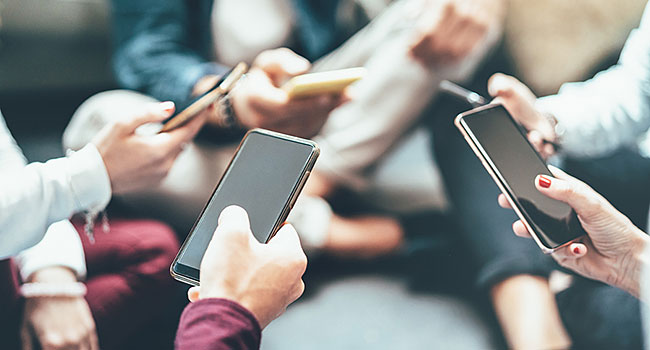Smart Devices Are Making Us Older
May 13, 2020 by Osama Bahsas ZakyTo understand how smart devices are making us older we have to know some facts about the light that these devices produce.
What we know as light is just a set of visible radiation waves, on average, between 380nm (blue-violet end) and 750nm (red end). This electromagnetic spectrum is enough to contain all the wavelengths that we experience as "colors".
The light that we see as "white" is the result of the sum of innumerable wavelengths, many rays colored light that, when added together, results in the perception of white color.

Approximately 25% of the white light that surrounds us is blue light, so blue light is a natural and necessary component of light that is emitted by natural sources such as the Sun, but also by artificial sources such as LED bulbs or the screens of electronic devices (tablets, televisions, computers, smartphones, and other devices).
The use of blue light is becoming more frequent every day since many white LED lights are produced by joining a blue LED with low-energy phosphor, which creates a solid-state light (SSL), this type of lighting. significantly reduces energy requirements.
The modern world is significantly exposed to this blue LED light, due to the presence of technology almost everywhere.
"A 2015 study by the Pew Research Center, found that 68% of Americans over 18 have a smartphone and 45% have a Tablet, and the use of these smart devices has been reported even in children since the age of 3, so the incorporation of artificial blue LED light in our lives is already a fact." The skin is made up of multiple layers, the outermost layers contain cells called keratinocytes that have fatty acids in their membranes and multiple molecules with many functions, including aquaporins, which are molecules that regulate the passage of water through the skin, and a study carried out in 2018 showed that not only ultraviolet rays affect these aquaporins since blue light emitted by artificial sources such as light bulbs and electronic devices interact with these aquaporins.
Melanopsin that is stimulated by blue light helps synchronize our wake-sleep rhythms or circadian rhythm, constant exposure, not only days or weeks but of months and years causes the sleep hormone or melatonin to be decreased abnormally.
When melatonin secretion is deactivated, we remain in a "state of alert", while in the absence of blue light, production and secretion of melatonin is activated so we can sleep well through the night.
This has one purpose, so our bodies can be regulated through sunlight, especially with the blue light. This type of light is the main tool that guides the brain to activate and / or deactivate biological rhythms.
As we mentioned before, one of the main molecules that are affected by the constant presence of blue light are aquaporins, the amount of which decreases so that the passage of water through the skin is greatly affected.
This affectation of the passage of water makes the repair of the skin and its hydration completely compromised, so that small doses of blue light but constantly can generate significant damage to the hydration of the skin.
By all the mechanisms we have seen and all the ways that blue light interacts with the skin we can name what the damage would be to it with chronic exposure to this light:
- Alteration of the defense barrier and inflammation of the superficial layers of the skin
- Inflammation of subcutaneous cell tissue and increased insulin resistance
- Increased oxidation of skin cells
- Decreased skin turgor
- Accelerated skin aging
- Dehydration of the skin
- Increased expression lines
- Increased number of wrinkles with chronic exposure
What once seemed like a joke, which was to think that taking too many selfies could affect the skin, has now been shown to be a reality, and that constant exposure to electronic devices, traditional light bulbs, and other light-emitting devices. Blue could considerably alter our skin.
So only the use of masks and protective glasses is not going to be enough, sunscreens do not prevent exposure from the skin to the blue light, the main measure of treatment is always prevention, and now prevention is within our reach.
Source:
- Ondrusova K, Fatehi M, Barr A, Czarnecka Z, Long W, Suzuki K et al. Subcutaneous white adipocytes express a light sensitive signaling pathway mediated via a melanopsin/TRPC channel axis. Scientific Reports. 2017;7
- Pittayapruek P, Meephansan J, Prapapan O, Komine M, Ohtsuki M. Role of Matrix Metalloproteinases in Photoaging and Photocarcinogenesis. International Journal of Molecular Sciences. 2016;17(6):868.
Next »
20,000 clinical trials are seeking participants.
Signup and be matched to trials near you
This free service will notify you of current and future clinical trial matches.
Signup and be matched to trials near you
This free service will notify you of current and future clinical trial matches.
